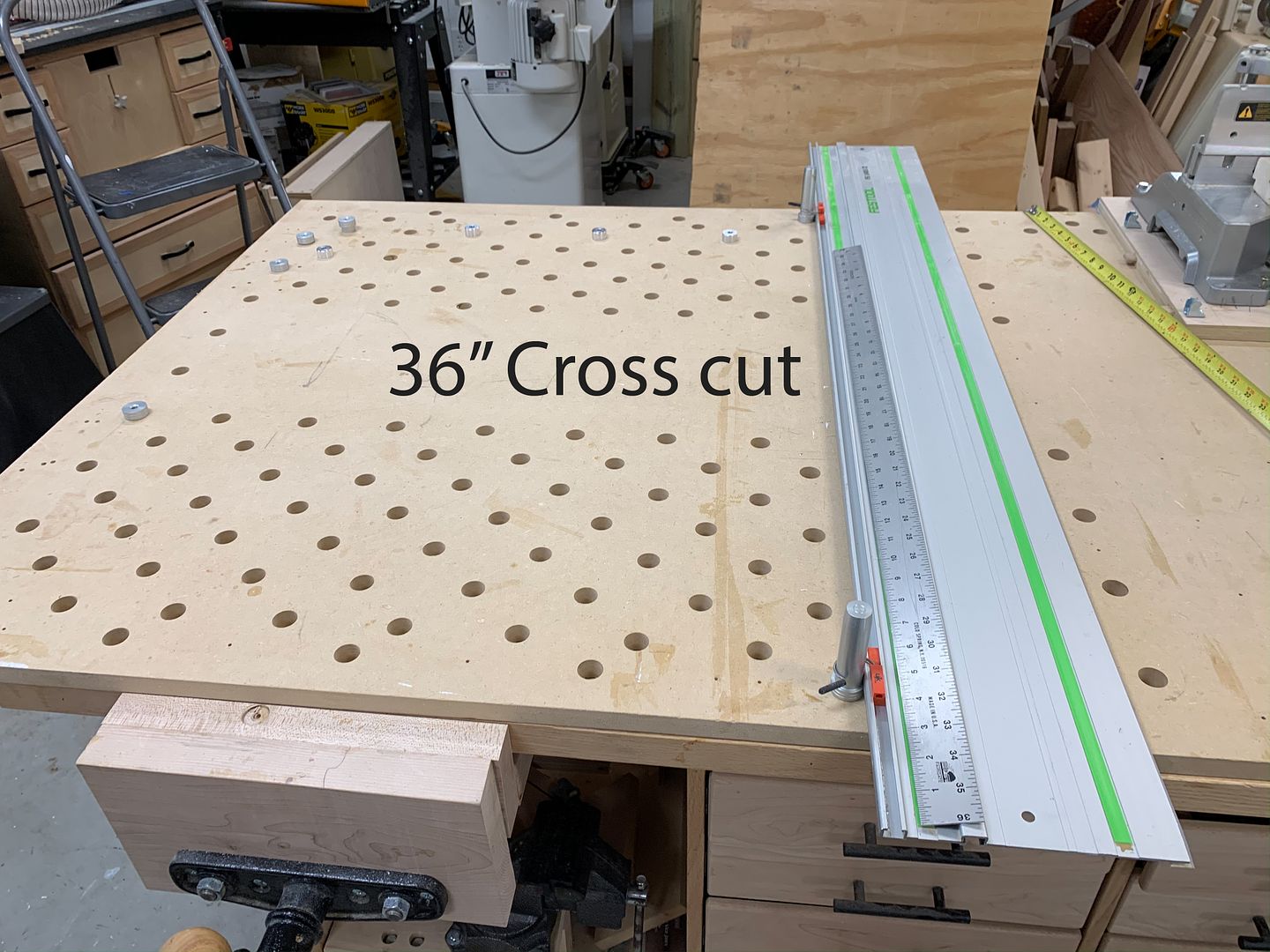Track saws are not just for large pieces. I had to cut small shelves for 5 different sized outside corner transitions on my kitchen cabinets. Each was different in size and had four shelves. Seven sides on each shelf. Smallest cut was about two inches long, the largest was about 13".
I made cardboard templates, and transferred the shape to the shelf boards with a pencil, then cut them all with a DeWalt track saw, using the 59" track. If you can draw a pencil line on it, you can cut it. A dab of double stick tape work piece to keep it from moving, and scraps to support the track works fine.
This was done before I made an 'L' fence for the table saw, which could have done the same thing.
Rick Potter
DIY journeyman,
FWW wannabe.
AKA Village Idiot.





 Reply With Quote
Reply With Quote







